Rock Climbing in Brazil
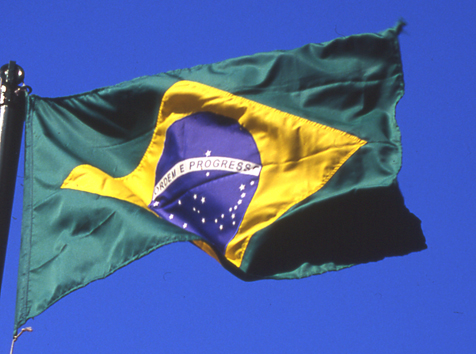
Brazil
Brazil is probably the country in South America with the best and most developed rock climbing scene. The most famous areas include the whole of urban Rio de Janeiro, Pedra Rascada, Salinas (a.k.a. Tres Picos), Itatiaia, Pedra do Bau and Marumbi. The rock in Brazil's coastal mountains is almost exclusively granite, often very rough grained. Some sandstone and limestone crags exist elsewhere in the country. Guidebooks exist for most of these areas.
ANDES lead and organise rock climbing trips to Brazil - for details please see the Brazilian Climber and Scrambler page.
Rock Climbing areas in Brazil
Rio de Janeiro
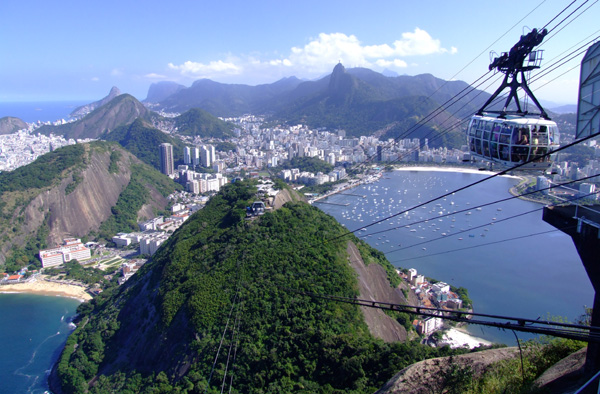
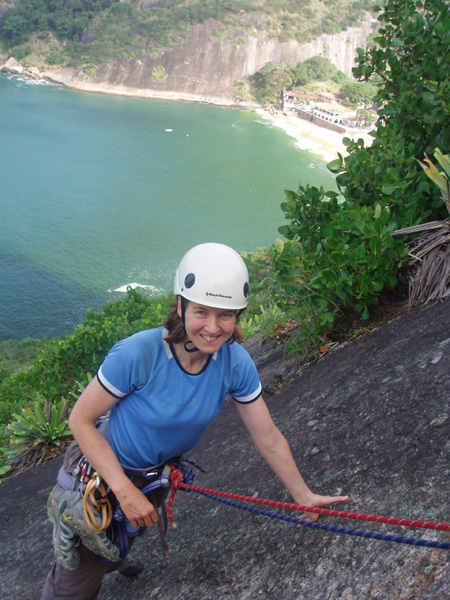
On the route ' Infravermelho' on the Morra Urca, above the Praia Vermelha, Rio.
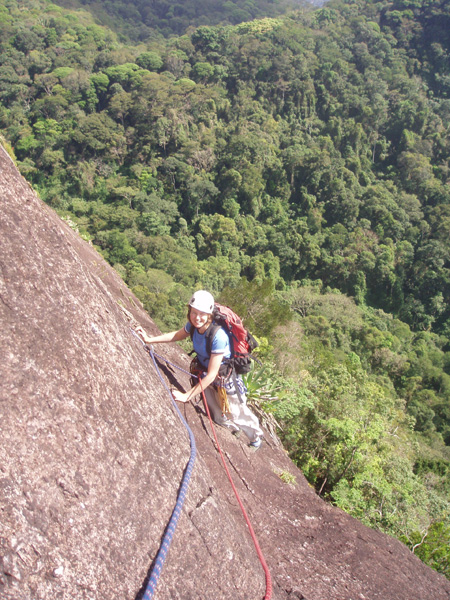
Climbing on the north side of the Agulinha da Gavea, Floresta da Tijuca Rio. In the Brazilian winter climbing season the north side is of course the sunny side.!
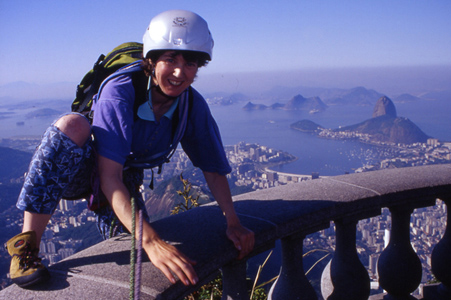
Topping out on K2, Grade IV+ (about E1 or 5.8) which finishes right by the Cristo Redentor statue on the Corcovado. Watch out for the Japanese tourists.
Tres Picos
Some of the longest and most impressive routes in Brazil are found on these mountains a few hours drive northeast of Rio. It is a very scenic area. Pico Maior, at 2315m, is the highest peak around here. It's in the middle of the photo below.
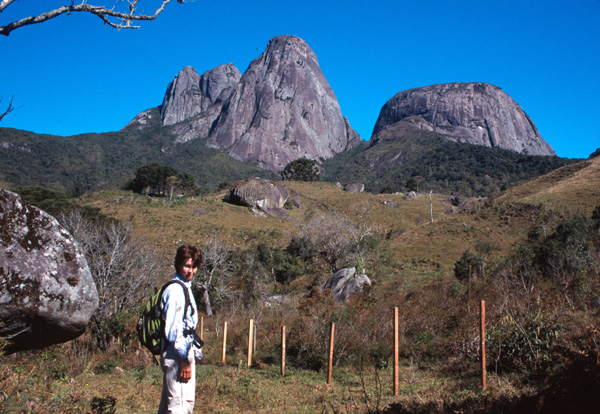
Serra dos Orgaos
Located an hour or so inland from Rio de Janeiro city centre these are very dramatic mountains with some classic rock climbs, including one of the most famous routes in Brazil on the 1600m high Dedo do Deus. First climbed early last century by an all Brazilian party it is still a difficult and exciting climb.! The normal route (about VS, 5.6 or 5.7) is up the west side in a series of three (tight) chimneys. Another good and popular route climbs the much longer east side, pictured below. It is slightly harder and with some more spectacular chimneys (about HVS, 5.8)
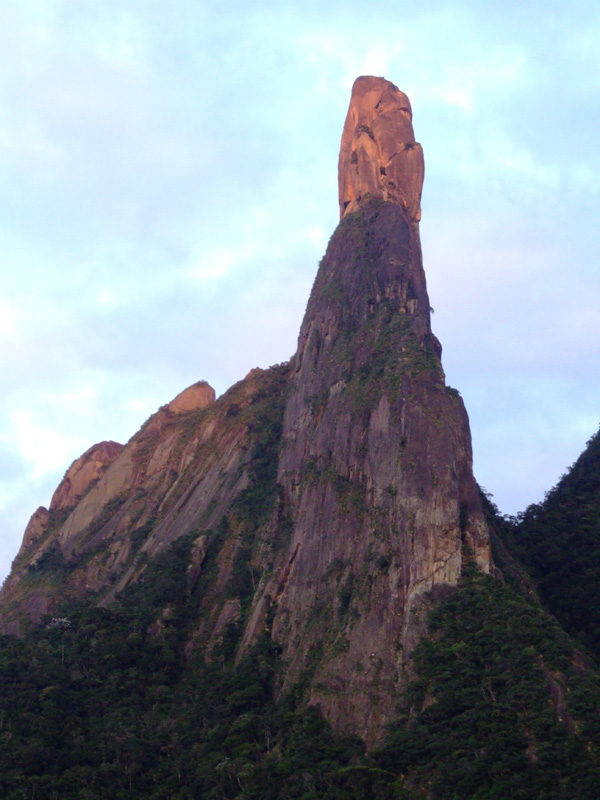
The Dedo do Deus at sunrise.
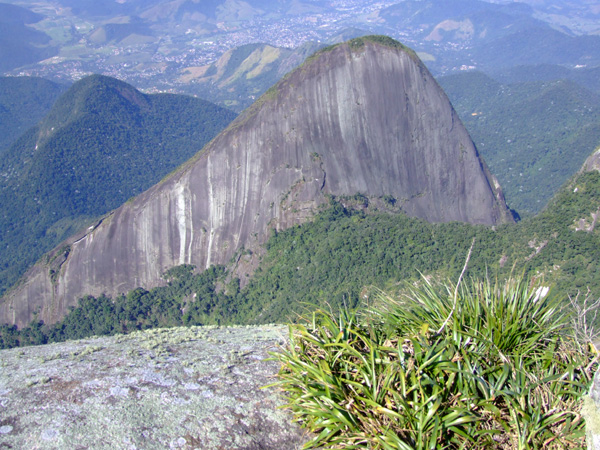
The view from the summit of the Dedo down onto the peak of Escalavrado, 1420m, a spectacular scramble up the left hand ridge, starting up a greasy gully from the main road. Mostly very straightforward but exposed and slabby climbing , with one 50m pitch of about V.Diff, 5.4
Itatiaia
Some of the highest peaks in the coastal range are in this national park. there is excellent scrambling and some good rock climbing too. Be prepared for cold weather in the June-August Brazilian climbing season. Frosts are regular at night and it even occasionally snows.
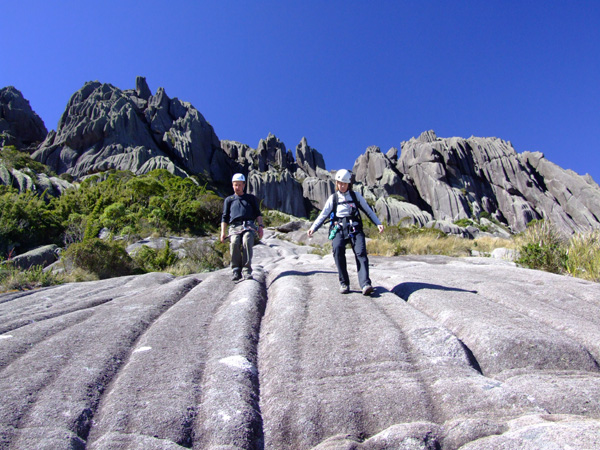
Scrambling on Agulhas Negras.
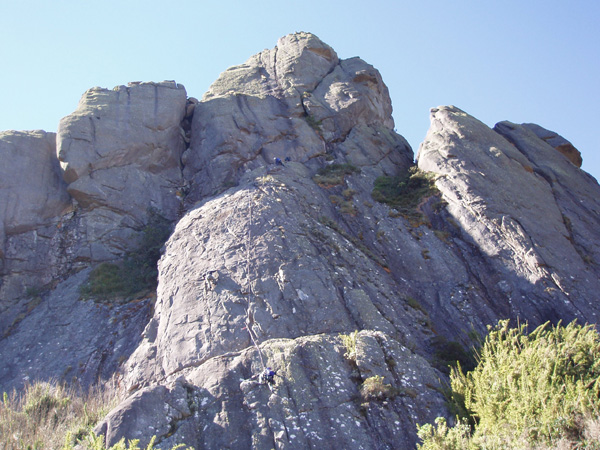
The 2600m high Pedra do Altar, one of the spots with the best rock climbing in the Itatiaia National Park. Climbers are on Cha para Dois (III) and Cafe na Cama (IV), both about VS or grade 5.6
Pedra do Bau
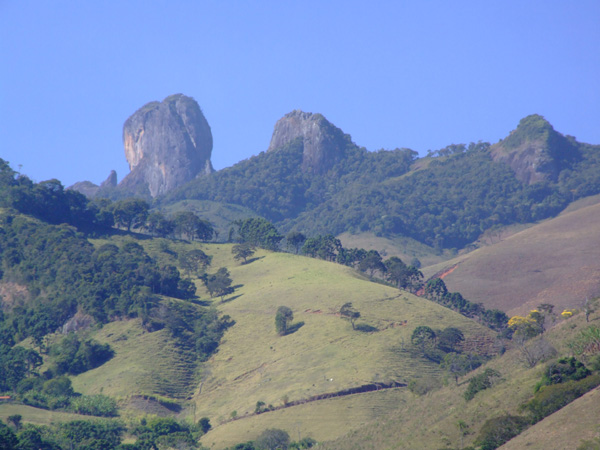
The Pedra do Bau is the biggest peak here - bigger than it looks at nearly 300m!
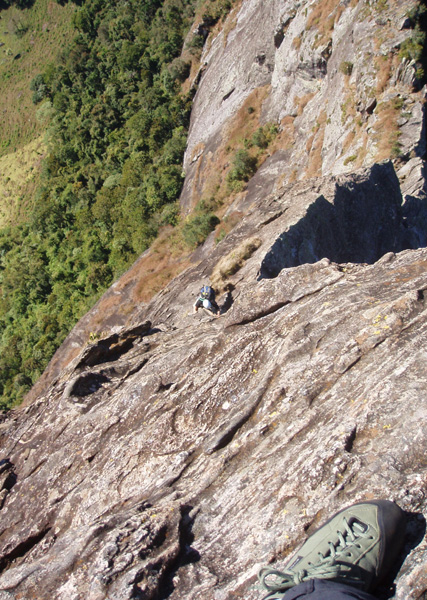
Looking down the easy but exposed top pitch of the Normal route on the Pedra da Bau (grade III).
Anhangava
Located just a short way from the city of Curitiba in Parana state, Anhangava is a small friendly place to climb, on very good rock. There aren't many routes though and nothing is longer than about 20m. However if you are in the area it is worth checking out. Pictured below one of the steeper routes at grade VII, the lower slab is a delicate grade V (about E1).
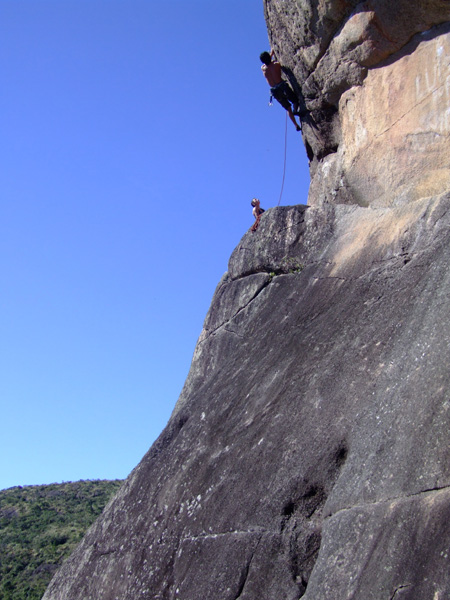
The nearby Refugio 5.13 (Cinco Trece) is a cool place to stay, they sell guidebooks, have information and a nice campsite surrounded by Parana pines.
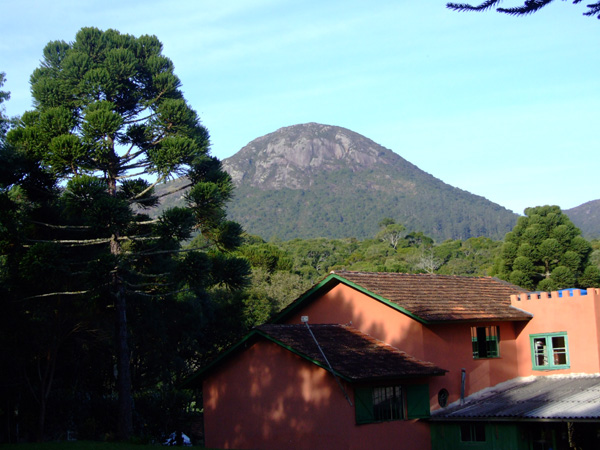
Marumbi
Marumbi is a steep and wildly overgrown and very atmospheric place to climb. It is about halfway between the city of Curitiba and the Atlantic Ocean. To get here either take the tourist train from Curitiba to Marumbi station (pictured below), or follow the old colonial road of the Estrada da Graciosa to the park entrance, from where a one hour walk gets you to the station.
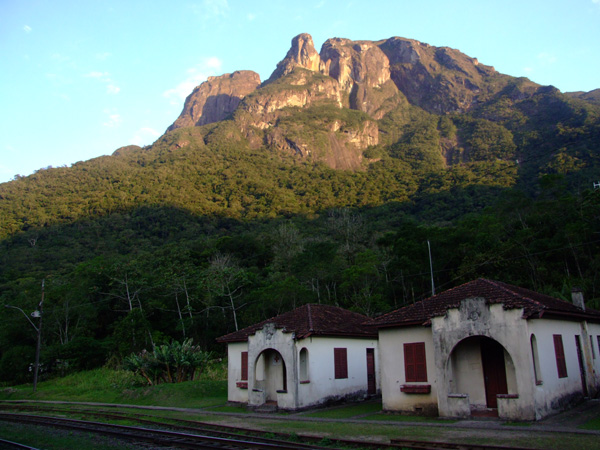
The guidebook here lists many routes from grade IV upwards, each with exposure grades (often serious) and unique vegetation grades (often plentiful). Marumbi is definitely a place for the climbing connoisseur, but is a remarkable place for a walk or a scramble. The ascents of the peak of Olimpo 1539m and Abrolhos c.1200m are long and sustained scrambles (easy grade though), featuring many iron staples, wires, overhanging vegetation and mud, snakes, monkeys, toucans etc...
Guidebooks
The following guidebooks are all reasonably easy to find (once you get to South America!!) and are reasonably accurate and useful.
Guia de Escaladas - Urca (Portuguese) by Flavio Deflon and Delson Queiroz -- the classic climbing areas around the Sugar Loaf - Morro da Babilonia, Morro da Urca and the Pao de Acucar itself.
Floresta Da Tijuca (Portuguese) by Flavio Deflon and Delson Queiroz -- climbs in some of the more outlying areas of Rio, including the Pedra do Gavea, Agulinha da Gavea, Corcovado and the Pico Tijuca.
Guaratiba - Andre Ilha -- A coastal area near Rio.
Guia de Escaladas do Itatiaia (Portuguese) by Alberto and Correa Guedes -- Climbs in this mountainous area about four hours drive from Rio, including Agulhas Negras and Prateleiras.
Guia de Escaladas - Tres Picos (Portuguese) by Alexandre Portela and Sergio Tartari and Isabella de Paoli.
Manual de Escaladas e Boulders - Pedra do Baś (Portuguese) by Eliseu Frechou -- A small guide to this brilliant piece of rock.
Anhangava (Portuguese) by Dalio Zipppin Neto and Ronaldo Franzen.
Marumbi (Portuguese) by Jose Luiz Hartmann.

Burrowing Owl

